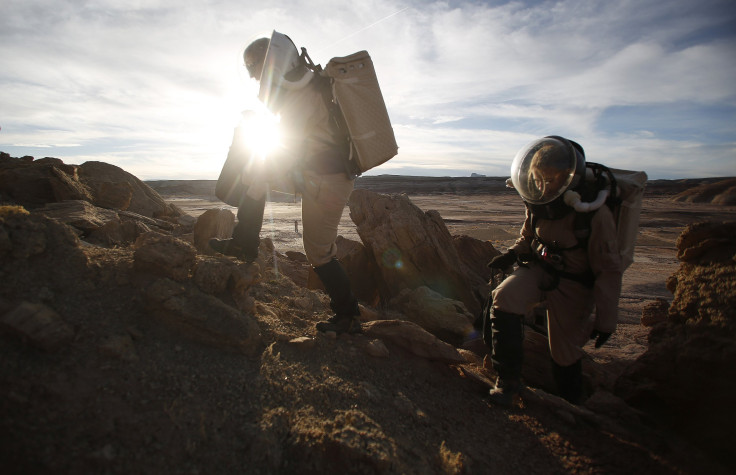Mars Exploration: Space Travel To 'Define Humankind' In Short Time, Expert Says

Humans have been fascinated by Mars for decades, preoccupied with the possibility of life on the red planet and the idea that humans will someday populate its vast deserts. That possibility is now more real than ever, according to experts who have suggested that, with the right investment of time and money, Mars travel will define the next generation.
The interest in Mars has heated up this week, which marks the second anniversary of the successful landing of the Curiosity rover. The rover will now enter a phase of its mission in which it explores the base of Mt. Sharp, a location that scientists believe could hold microbial life forms, caches of water and other signs of Martian life. Scientists hope the excursion provides some relief to human beings exhausted by the multiple conflicts that have dominated international headlines for months.
Marc Kaufman, author of “Mars Up Close,” which combines inside stories about the Curiosity mission with bright pictures taken by the rover, told National Geographic that transporting humans to Mars would require hundreds of billions of dollars and a variety of missions, but such an endeavor could inspire some much-needed international cooperation.
“The logic for it, as many see it in the space world, and I came to see it also, is that it’s a challenge that will define us. And by 'us,' I mean both the United States and other nations,” he said. “It’s clear that the U.S. itself can’t do this alone. It needs -- and is increasingly cooperating with other countries -- the EU in particular but also Japan and India. Russia has also been a very good partner in the past, but that may have fallen apart because of Ukraine. But putting that aside, this magnificent challenge, like going to the moon in previous generations, could define humankind.”
The very fact that such a possibility is even imaginable is a reflection of how far science has advanced over the past half-century. Astronomers gazing at Mars in the 1950s speculated that, because the planet is red, it might serve as host to some sort of vegetation. Then came movies with titles like “Invaders from Mars” and “Mars Needs Women,” which posited science-fiction ideas that only became more popular when Ray Bradbury wrote “The Martian Chronicles” in 1950.
NASA’s rovers, Curiosity and Opportunity, have debunked those theories by transmitting images of the desolate planet back to earth. The Opportunity rover, in particular, recently proved that exploration will only continue when it set the record for driving miles on an outer space planet at 25 miles.
Kaufman, promoting his new book, told NatGeo that while human perception of Mars has changed in a relatively short time, the planet itself has yet to be altered by human existence, whereas earth is unrecognizable from the planet it was at the time of the dinosaurs.
“Conditions are similar to what they were 4 billion years ago,” he said. “So it’s quite possible that one day scientists will be able to say: ‘We’ve detected remnants that tell us there was once biology here.’ It’s very hard. It requires both the instruments and a leap of the imagination.”
© Copyright IBTimes 2025. All rights reserved.





















